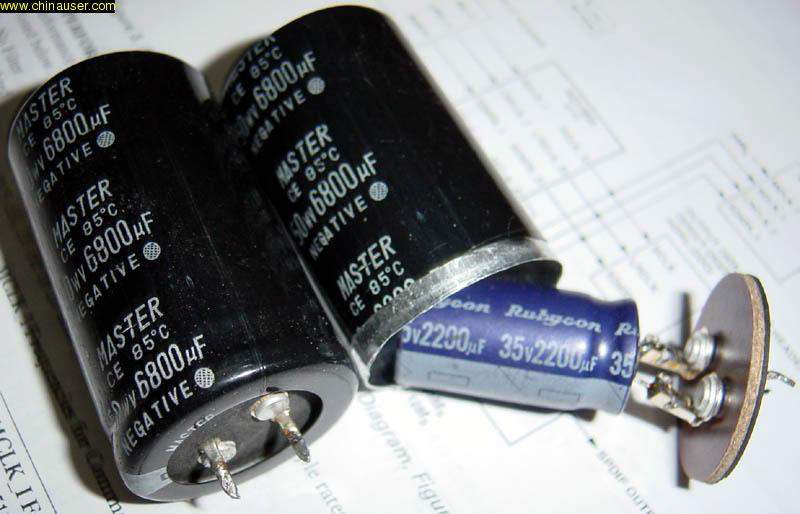A long and joyful road that has no end. Wonderful!
Took an under the hood post total organ transplant on of my PYE HF25’s
They previously sported a pair of highly transparent V Cap Teflon 0.47 output stage caps however lately playing around with Russian K75-10 Hybrid Paper and Polyethylene Terephthalate In Oil Capacitors…which bring a nice weight of tone and texture to the amps.
The factory 1950’s high voltage capacitor cans C2-13-14-15 were drawn and replaced with newer caps inside and re potted…a right PITA job yet worth it to retain the Origional look of the amps.
Your up skirt photos are prettier (and clearer) than mine
Nice big Russian PIO caps (apparently that’s the big boxes)
It does look very tidy indeed ![]() . I’m not sure the purist end of the Japanese market would accept that the look is absolutely original though
. I’m not sure the purist end of the Japanese market would accept that the look is absolutely original though ![]() .
.
Yes. Western ones look much the same TBH.
VB
I was more focussed on mr Boardman clouting everything with the fat end of the screwdriver looking/listening for a faulty component
The Far East audiophiles do love their origional factory TCC Metalpaks
Even if they aren’t entirely capacitors any more.
VB
Lordy Lordy…the amount of Paks and Mites that I have binned over the years…I should have kept them and stuck them on eBay…The Chinese do like to gamble!
Inside my Cymer se-35 Southern Star mono amp.
No PCB boards, as it should be and I swapped a couple of Mundorf caps for Jupiter’s. A definite upgrade.
Wouldn’t have thought a mythical deity had much use for capacitors to be honest. Learn something new every day.
Very nice
Should upgrade them to Mundorfs 
How cheap must labour be in China/India for that to be worth the bother?
@chelseadave should stick with the Jupiters imho ![]()
And why use the wrong value cap ?
To be fair TCC were doing this for Quad deliberately in the 1950’s. Here’s a grey rectangular smoothing block out of a Quad II, which looks for all the world like a paper-in-oil cap, with the cylindrical electrolytic which is actually inside it removed through a hole trepanned in the base

The label on the outside of the whole thing does say that it’s a dual electrolytic, and the circuit shows that it is too. But who looks at circuits ? And the cap is installed in a way that hides the label …
VB
Not good to have those caps so close to the tubes - the early Jupiters had a reputation for melting! The current Jupiter HT (high temperature) are better, but I’d still keep them as far as possible from heat sources.
They do sound nice, though.
My once silly numbers collection of tuners had been cut down to the one by the time it, together with the bulk of my vintage gear, went into storage.
The Sansui TU-9900 is a battleship AM/FM tuner of 5 gangs and 3 IF filters, two of which have 4 stages rather than a typical ceramic filter’s 2 stages, so it’s like 5 filters if we count them in the traditional fashion…sensitive with superb signal stability ( with a good aerial ) producing a beautiful rich depth of tone as well as being a looker…










